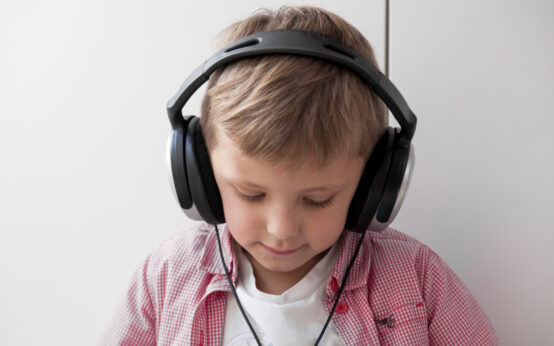Introduction
Managing emotions in autistic individuals presents a multifaceted challenge known as Emotional Management. This intricate process encompasses the ability to identify, comprehend, and appropriately address one’s emotions. Autistic individuals encounter unique hurdles in emotional regulation, stemming from sensory sensitivities, challenges in communication, and struggles with social interaction. Despite these obstacles, through tailored assistance and effective techniques, individuals on the autism spectrum can cultivate skills to regulate their emotions more adeptly and engage in social scenarios with greater ease.
Challenges of Emotional Regulation in Autism
Autism spectrum disorder (ASD) is characterized by a range of challenges related to social communication, repetitive behaviors, and sensory sensitivities. These challenges can significantly impact an individual’s ability to regulate their emotions. For example, sensory overload from loud noises or bright lights can trigger anxiety or overwhelm in autistic individuals, leading to emotional dysregulation. Additionally, difficulties understanding social cues and navigating social interactions can contribute to feelings of frustration and confusion, further exacerbating emotional challenges.

Research has shown that emotional regulation difficulties are common among individuals with ASD. Factors such as sensory sensitivities, executive function deficits, and difficulty understanding emotions in oneself and others can all contribute to emotional dysregulation in autistic individuals.
Within the kaleidoscope of emotions, children with autism paint their own vibrant palette, where every hue tells a story of resilience, depth, and unique perception.
Amelia J. Carter
Strategies for Supporting Emotional Management
Despite the challenges associated with emotional regulation in autism, there are several effective strategies that can help individuals develop these skills:
a. Visual Supports: Visual supports, such as emotion cards, can help autistic individuals identify and label their emotions. By providing visual cues, individuals can better understand and express how they are feeling, leading to improved emotional awareness and regulation.
b. Sensory Breaks: Providing opportunities for sensory breaks can help autistic individuals regulate their emotions when feeling overwhelmed. Sensory breaks can encompass various activities, like practicing mindful breathing, enjoying soothing melodies, or participating in sensory-friendly pursuits such as gentle swinging or rhythmic rocking.
c. Social Stories: Social stories are narrative interventions that provide individuals with ASD with information about social situations, expectations, and appropriate responses. By using social stories, individuals can learn how to navigate challenging social situations and regulate their emotions more effectively.
d. Coping Skills: Teaching coping skills such as deep breathing, progressive muscle relaxation, or mindfulness techniques can help autistic individuals manage their emotions when faced with challenging situations. These skills can provide individuals with a sense of control and empowerment over their emotions.
e. Predictable Routines: Establishing predictable routines can help reduce anxiety and provide a sense of stability for autistic individuals. Predictable routines can help individuals know what to expect and better prepare for upcoming events, reducing the likelihood of emotional dysregulation.
f. Positive Reinforcement: Using positive reinforcement techniques, such as praise or rewards, can encourage and reinforce appropriate emotional expression and regulation in autistic individuals. By providing positive feedback, individuals can feel validated and motivated to continue practicing and improving their emotional regulation skills.
Supporting Emotional Regulation in Everyday Life
In addition to implementing specific strategies, there are also ways to support emotional regulation in everyday life:
a. Create a Supportive Environment: Creating a supportive and understanding environment is essential for helping autistic individuals regulate their emotions. This can involve being patient and compassionate, providing reassurance and encouragement, and validating their feelings and experiences.
b. Foster Open Communication: Encouraging open communication and providing opportunities for autistic individuals to express their emotions can help them feel heard and understood. By creating a safe and non-judgmental space for communication, individuals can feel more comfortable sharing their feelings and seeking support when needed.
c. Model Healthy Emotional Expression: Demonstrating healthy emotional expression and regulation can support individuals with autism in developing effective methods to express and manage their emotions. By demonstrating techniques such as deep breathing or positive self-talk, individuals can learn by example and develop their own coping skills.
d. Collaborate with Professionals: Working collaboratively with professionals, such as therapists, educators, and medical professionals, can provide additional support and resources for individuals with ASD. These professionals can offer specialized interventions and strategies tailored to the individual’s needs, helping them develop effective emotional regulation skills.
Conclusion
In Conclusion, emotional management in autistic individuals is a multifaceted ability that can pose significant hurdles. Nonetheless, with the appropriate guidance, techniques, and treatments, individuals with ASD can acquire enhanced emotional regulation skills and successfully navigate social interactions. By acknowledging the intricacies of emotional regulation in autism and incorporating scientifically proven methods, we can foster an environment where autistic individuals can flourish and enhance their overall quality of life.
Source
- American Psychiatric Association. (2013). Diagnostic and statistical manual of mental disorders (5th ed.). Arlington, VA: American Psychiatric Publishing.
- Mazefsky, C. A., Herrington, J., Siegel, M., Scarpa, A., Maddox, B. B., Scahill, L., & White, S. W. (2013). The role of emotion regulation in autism spectrum disorder. Journal of the American Academy of Child & Adolescent Psychiatry, 52(7), 679–688.
- National Autism Center. (2020). Evidence-Based Practice and Autism in the Schools. Randolph, MA: Author.
- White, S. W., Keonig, K., & Scahill, L. (2007). Social skills development in children with autism spectrum disorders: A review of the intervention research. Journal of Autism and Developmental Disorders, 37(10), 1858–1868.
- Zachor, D. A., & Ben-Itzchak, E. (2017). The effects of intellectual functioning and autism severity on outcome of early behavioral intervention for children with autism. Research in Autism Spectrum Disorders, 41–42, 13–21.
- Zwieback, S. (2014). Art & Science of Teaching Kids to Calm: A Therapy Manual. Spokane, WA: CreateSpace Independent Publishing Platform.







